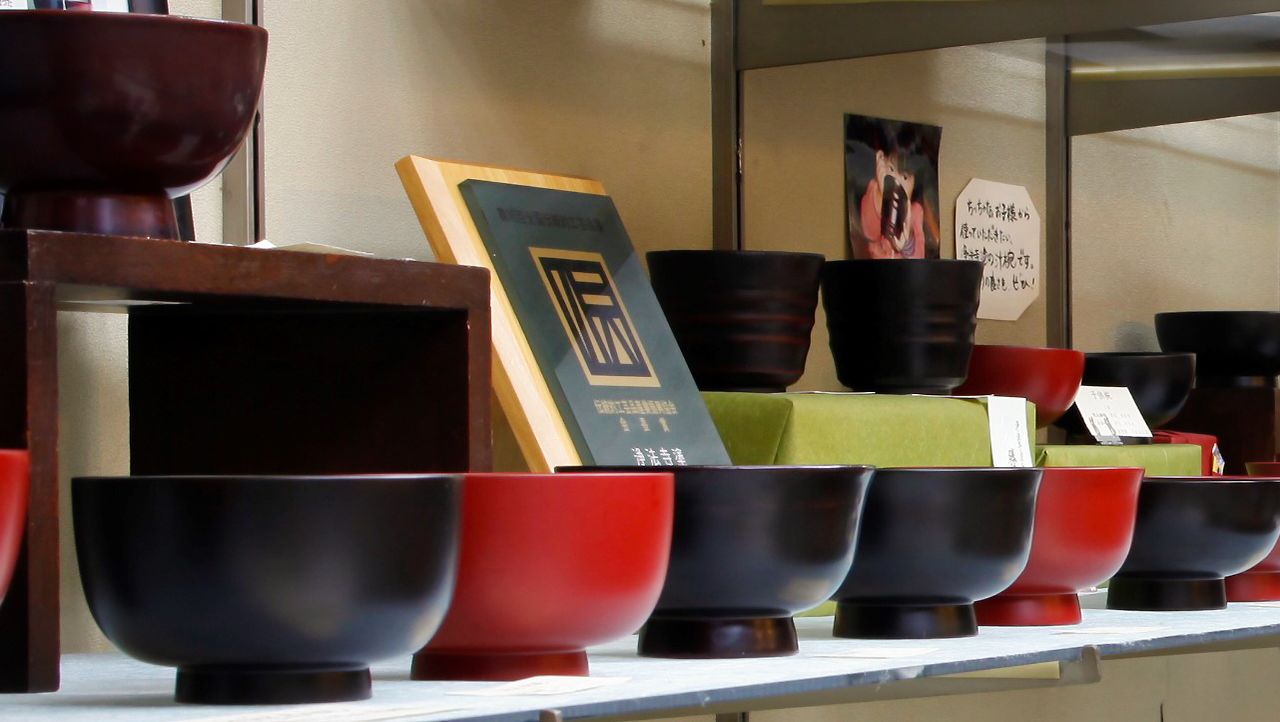
Jōbōji Lacquerware: Daily Use Brings Out Its Beauty
Guideto Japan
Art Travel- English
- 日本語
- 简体字
- 繁體字
- Français
- Español
- العربية
- Русский
Lacquerware: Craft Synonymous with Japan
The word urushi is said to have come from uruwashii, meaning “graceful” or “elegant,” or uruoi, “to become moist.” Sap produced by lacquer trees to repair cuts to their bark is harvested and refined to be used as lacquer. Urushiol, the sap’s principal ingredient, takes oxygen from the moisture in the air and creates a strong film on whatever surface it is applied to.
Lacquer is both an adhesive and a staining agent that imparts color and luster. Applied to wooden bowls, stacked jūbako boxes, and a host of other decorative items, lacquer transforms them into articles both exquisite and durable. For the same reasons, lacquer is also essential for temple and shrine buildings.
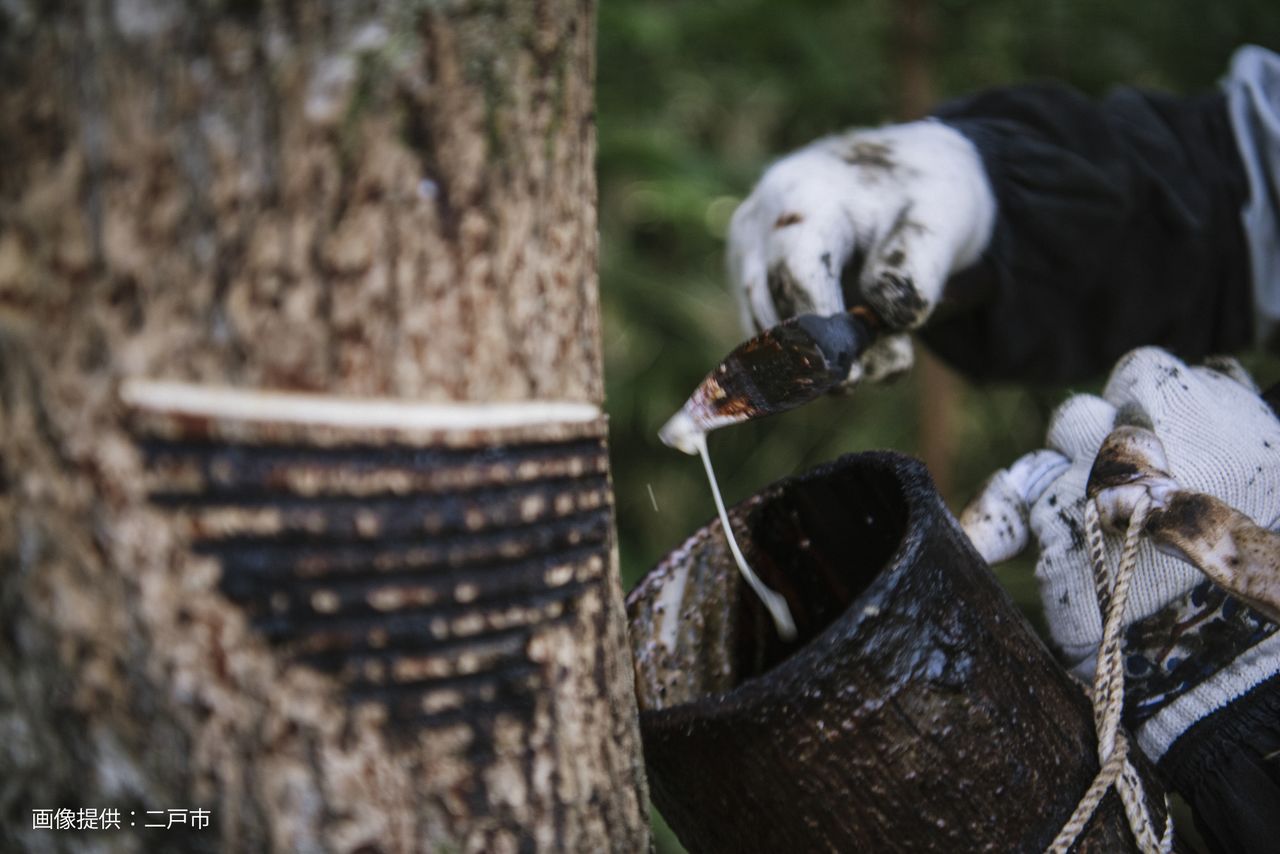
The trunk of a lacquer tree is scored and the sap oozing from the cuts is collected. (Courtesy Ninohe City)
During the Age of Exploration from the fifteenth to the seventeenth centuries, seafaring Europeans reaching Japan prized the lacquerware they acquired, which was known in Europe as “japan.” Similarly, ceramics from China were called “china.” Lacquerware, one of Japan’s best-known crafts, was made throughout the country during the Edo period (1603–1868) as local daimyō encouraged production. Lacquerware continued to be a daily necessity even after those years, and exported in quantity, it was also highly appreciated abroad for its aesthetic qualities.
But Japanese lifestyles underwent drastic change after World War II as plastic and Western-style tableware became widespread. An influx of inexpensive lacquerware, mainly from China, also caused domestic production to go into decline. In some areas known for the craft, lacquerware earned the “traditional craft” designation and survived thanks to demand from collectors and tourists. Lacquer production peaked in the years around 1960, though, and has continued to decline since then. Today Japan only produces 1% to 2% of all the lacquer it consumed.
One place where lacquer continued to be produced was the Jōbōji district in Ninohe, Iwate Prefecture. Iwate is the birthplace of the local specialty Jōbōji lacquerware. Although lacquer production fell off there in the modern era, as it did in the rest of the country, local producers began planting new stands of lacquer trees there in 1978. Today, Jōbōji accounts for 70% of all domestic production of lacquer.
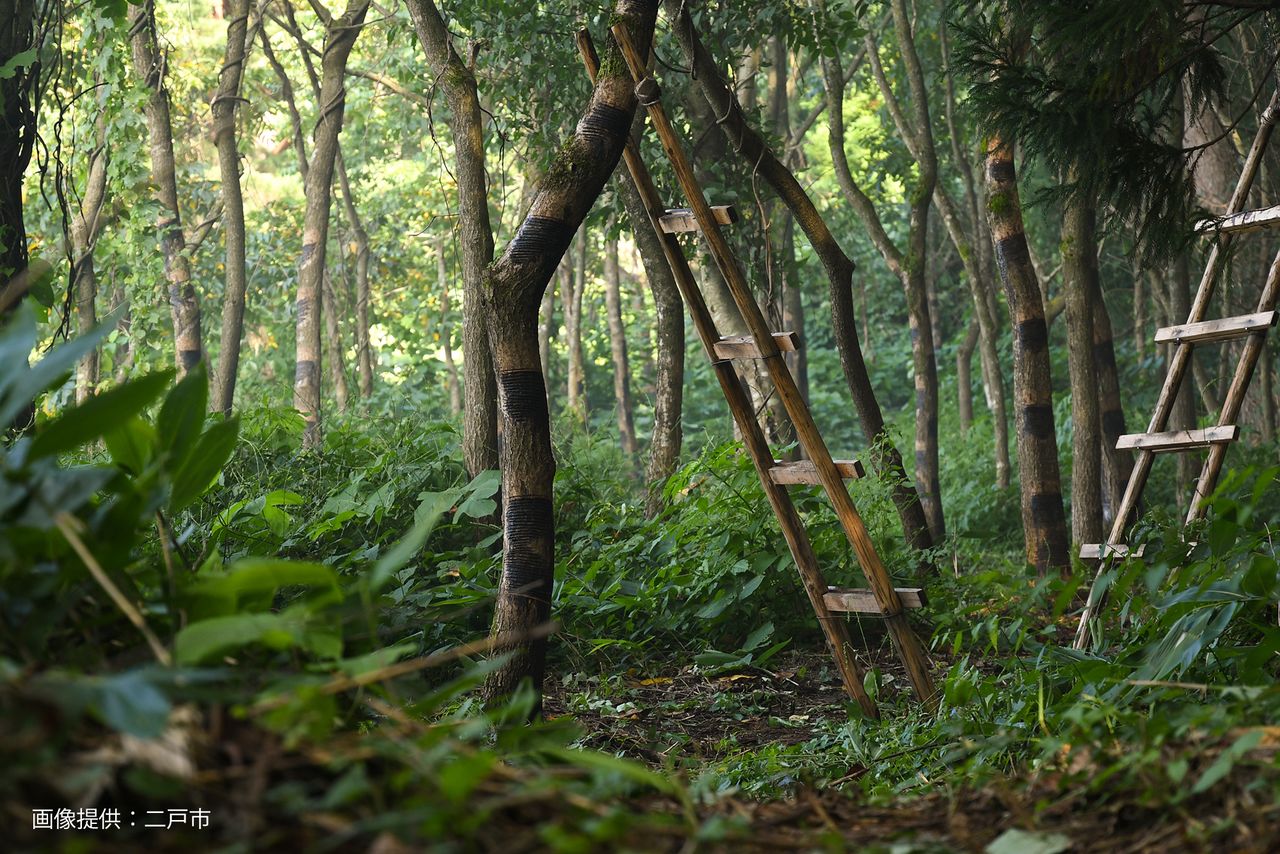
A lacquer tree plantation. Each tree produces only 200 milliliters (barely one cup) of sap a year. (Courtesy Ninohe City)
A 1,200-Year-Old Craft
We learned more about the history and the appeal of Jōbōji lacquerware from Fujimura Maki, who heads the Urumi Kōgei craft workshop in Morioka.
Fujimura, a highly skilled artisan officially recognized as a traditional craftsperson, comes from generations of lacquerware artisans based in a small community in Hachimantai, neighboring Jōbōji. The family moved to Morioka in 1953, opened a lacquerware shop, and took the name Urumi Kōgei in 1981. Katsumata Yoshiharu, Maki’s father and the first Jōbōji traditional lacquerware artisan to be designated a contemporary master of his craft, passed the reins to Maki in 2017. She says that, as far as she knows, hers is one of the few families where the craft has been passed down to the next generation.
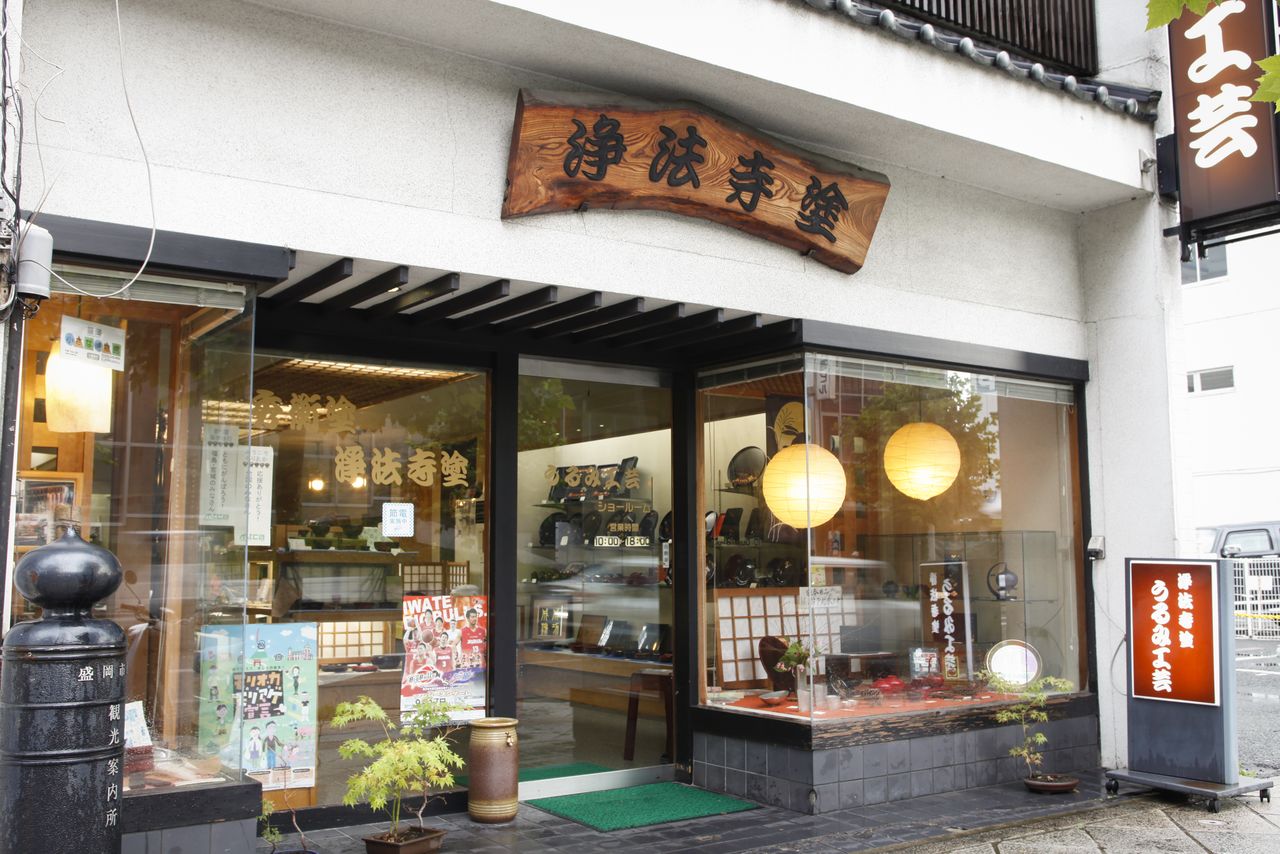
Urumi Kōgei’s showroom is a 15-minute walk from JR Morioka Station. The workshop itself is located in the nearby city of Takizawa. (© Shoepress)
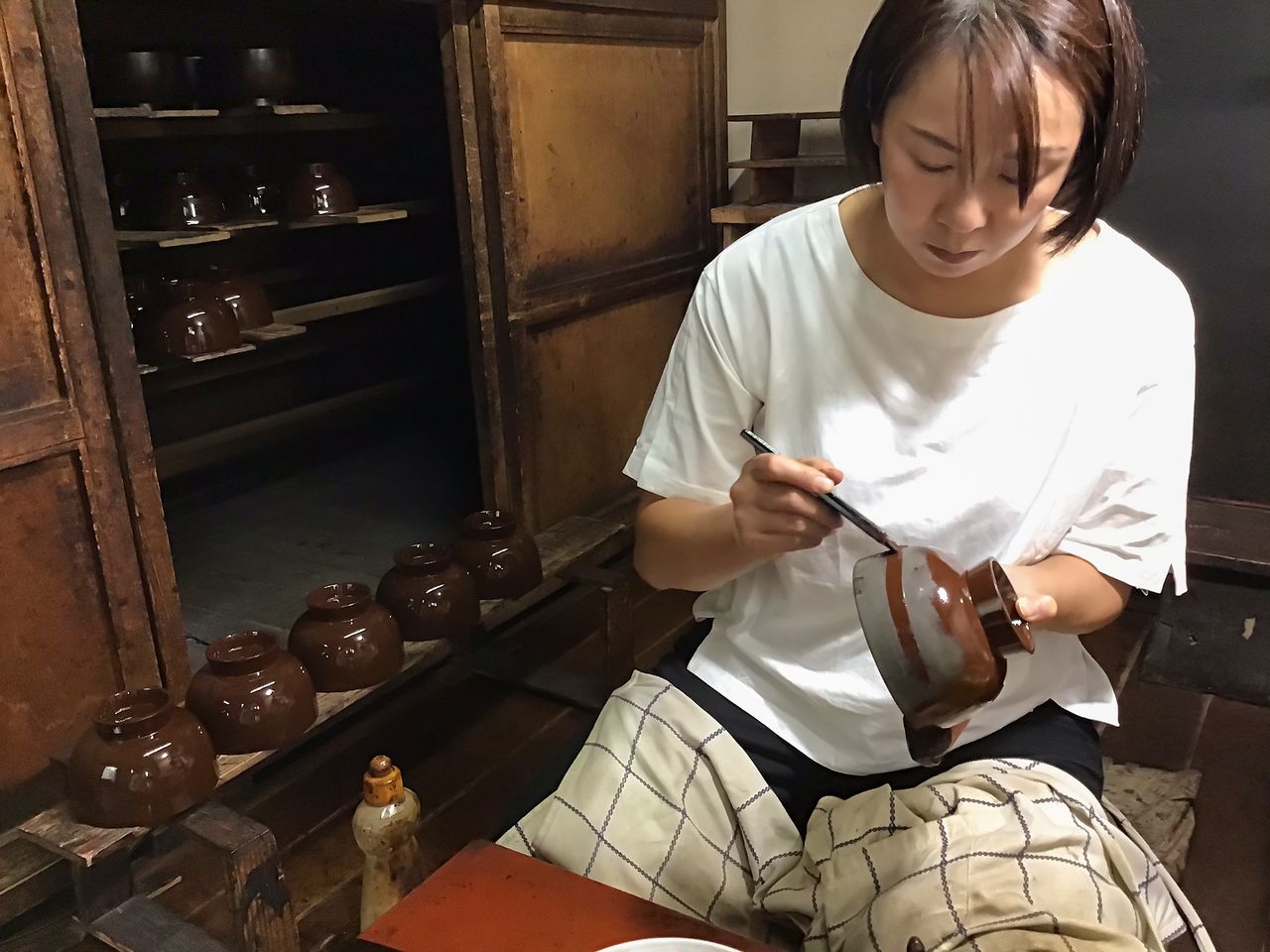
Fujimura has mastered the time-honored skill of applying lacquer, a process involving over 40 steps. After a base coat is applied to the wood, lacquering and polishing are repeated. (Courtesy of Urumi Kōgei)
The history of Jōbōji lacquerware dates from the Nara period (701–94), when Buddhist priest Gyōki (668–749) founded the temple Tendaiji in what is today’s Jōbōji district in 728, on the order of Emperor Shōmu (r. 724–749). According to Fujimura, the story is that Jōbōji lacquerware got its start when priests coming from Kyoto to live at the temple made lacquered bowls and other items for their daily needs. The name Jōbōji comes from the Jōhōji clan, which controlled the area around the district’s Appi River from the twelfth to the sixteenth centuries.
Fine lacquer trees grew in profusion in the area, and in the Edo period the Nanbu clan encouraged the lacquerware craft as a local specialty, which spread from Jōbōji to neighboring districts. In the late 1800s, lacquer sap gatherers from Imadate in Fukui Prefecture came to work in the area. They brought with them tools and techniques for collecting larger quantities of the sap, thanks to which the local industry further flourished. Fujimura notes: “The sap used to make Jōbōji lacquerware contains a large amount of urushiol, which gives the lacquer a hard, durable finish.”
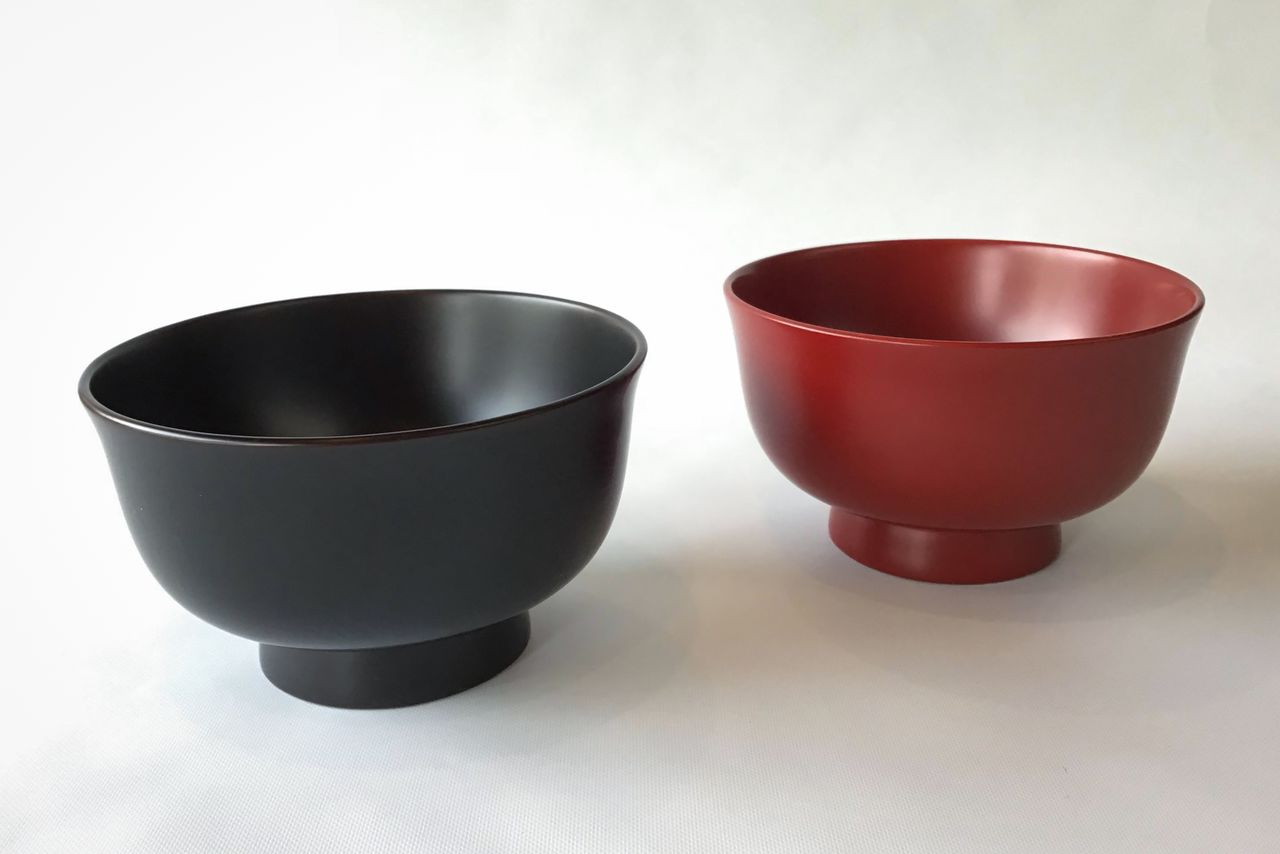
Jōbōji lacquer combines practicality and simple attractiveness. (Courtesy Urumi Kōgei)
Beauty Polished Through Use
The work of creating Jōbōji lacquerware is divided between woodturners, who cut the wood and shape the pieces, and lacquerers, who handle all processes for applying the lacquer, beginning with the base coat. Applying lacquer requires over 40 steps in all, and completing a piece takes three months. During the Edo period, articles created for daimyō were fancy items decorated with gold leaf, but throughout its history, Jōbōji lacquerware’s basic form has espoused simplicity. The pieces usually have no added decoration. Many come in plain black or vermillion, and the lacquer is left unpolished after the final coat has been applied. The matte finish highlights the innate beauty of the lacquer, and its plain look has made this area’s craft more broadly approachable throughout its long history.
“Lacquer trees are plentiful here, and we feel that simple is best for highlighting the superior quality of the lacquer they yield. Urumi Kōgei’s lacquerware is meant for everyday use. Because of that, we bank on making articles that fit comfortably in the hand, in solid colors that users will not tire of,” says Fujimura.
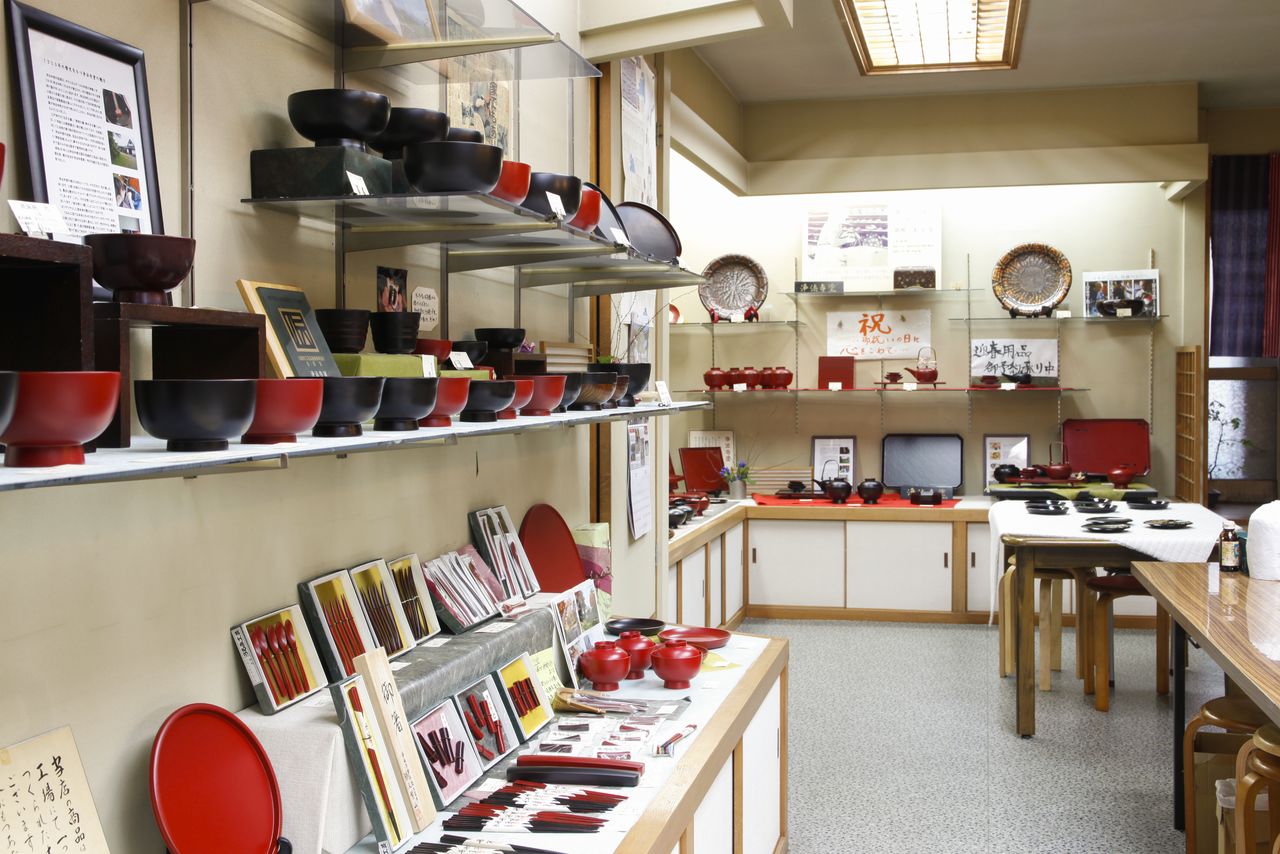
The Urumi Kōgei showroom displays numerous lacquerware items in plain styles. (© Shoepress)
Jōbōji lacquerware, washed in cold water and dried with a cloth, will develop a mirror-like patina over time as the lacquer’s fine graininess wears away. In its showroom, Urumi Kōgei displays a new bowl and one that has seen 10 years of use side by side. Attracted by the deep patina of the older vessel, quite a few visitors decide to make a purchase.
“Unless an item has split in two, we can repair it. In an age that is moving away from throwaway culture, lacquerware has a place in a circular economy. When we’re asked to repair an article that has developed a lustrous shine after five or ten years of use, I feel almost as though we’ve been entrusted to care for a family member.”
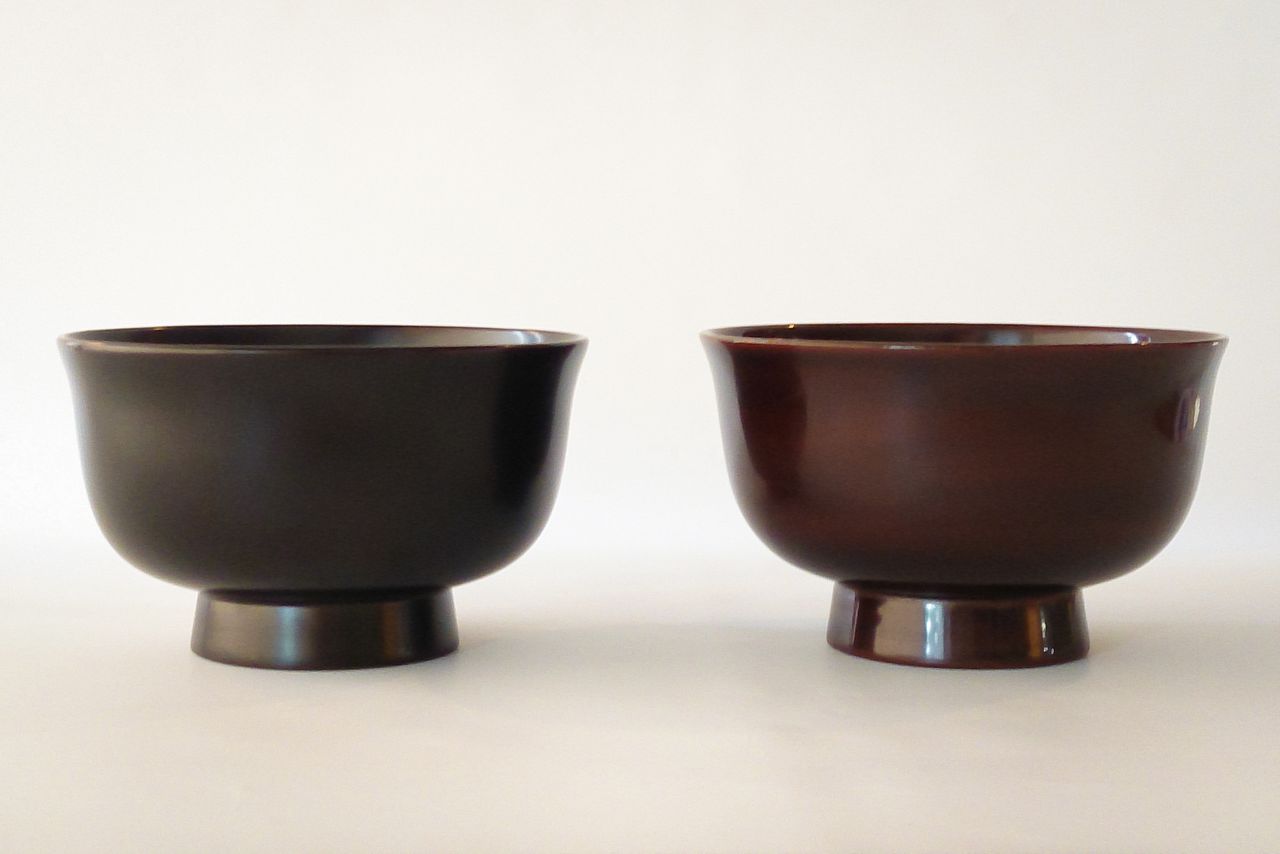
Two bowls sit side by side for comparison purposes. The one on the left is new; the one on the right has developed a reddish patina after 10 years of use. (Courtesy Urumi Kōgei)
Maintaining the Tradition
In 2006, the Cultural Affairs Agency initiated a program of designating producing areas, in order to promote the stable supply of materials like lumber, cypress bark shingles, thatch, and lacquer essential for preserving and repairing culturally significant structures. Jōbōji was the first such area designated, and under the program, lacquer trees have been planted and young workers from all over the country are being trained in the skill of lacquer sap harvesting.
In 2015, the Agency issued a directive requiring that only domestically produced lacquer be used for restoration work on national treasures and important cultural properties. In the five years since then, domestic lacquer production has nearly doubled, bringing domestic self-sufficiency to 5%. All eyes are on the Jōbōji district now, which has been making a solid contribution to domestic production, and there is renewed appreciation for Jōbōji lacquerware, which makes abundant use of local lacquer.
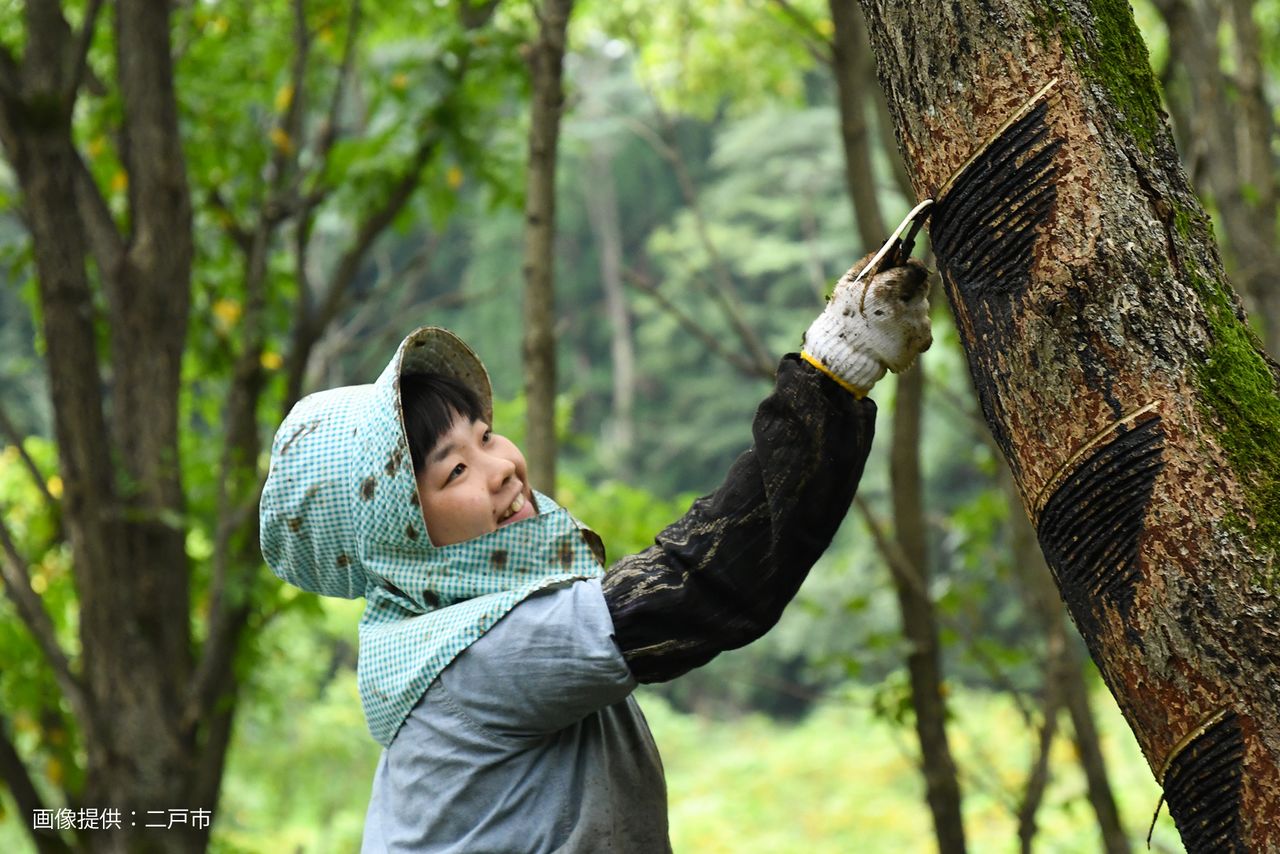
A lacquer tree plantation in Jōbōji, where workers learn essential skills. (Courtesy Ninohe City)
Even so, the future of the industry is not assured. Fujimura continues to practice the craft, saying “I watched my grandparents hard at work producing lacquerware, and I know there are customers who treasure their Jōbōji pieces. I love the complex, deep coloring particular to our lacquerware that develops over the years, and I’m continuing in the path of my forebears because I sincerely believe that this craftwork must not disappear.”
Anyone interested in lacquerware who visits Morioka should arrange for a hands-on experience painting a design on lacquerware at the Urumi Kōgei workshop (for a fee, by reservation). The simple beauty of Jōbōji lacquerware is sure to win hearts.
Urumi Kōgei Showroom
- Address: 2-9-23 Chūō-dōri, Morioka, Iwate Prefecture
- Tel.: 019-654-4615
- Hours: 10:00 am to 6:00 pm
- Closed: Year-end and New Year holidays
- Access: 15-minute walk from JR Morioka Station. 1 minute from the Chūō-dōri 2-chōme stop on the Den Den Mushi Morioka Loop Bus.
(Originally published in Japanese. Reporting, text, and photos by Shoepress. Banner photo: Plain Jōbōji lacquerware items and a plaque designating the creator a traditional lacquer artisan. © Shoepress.)